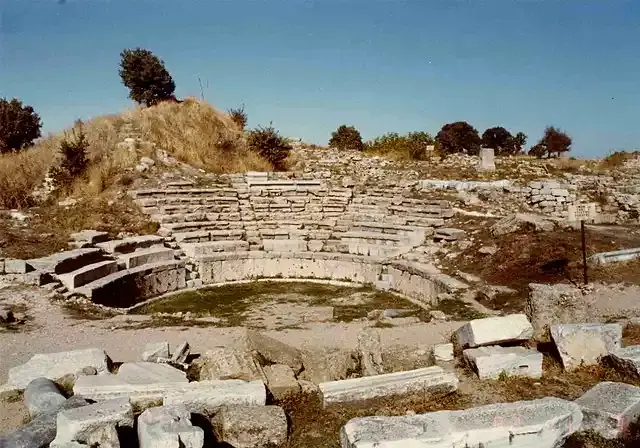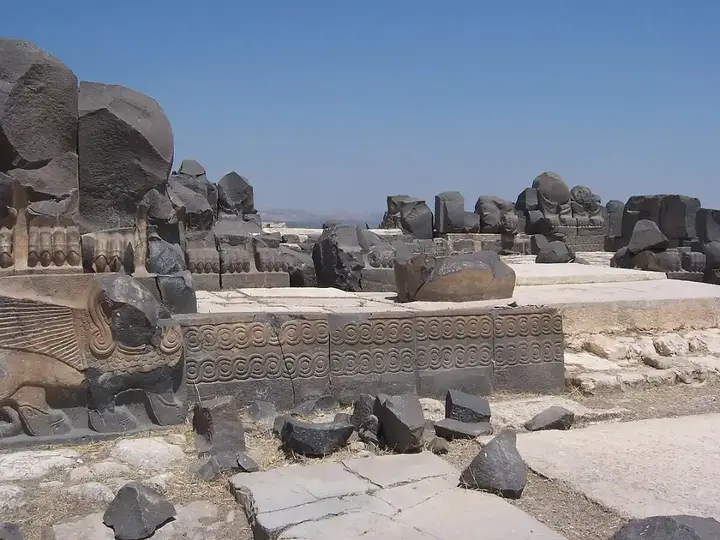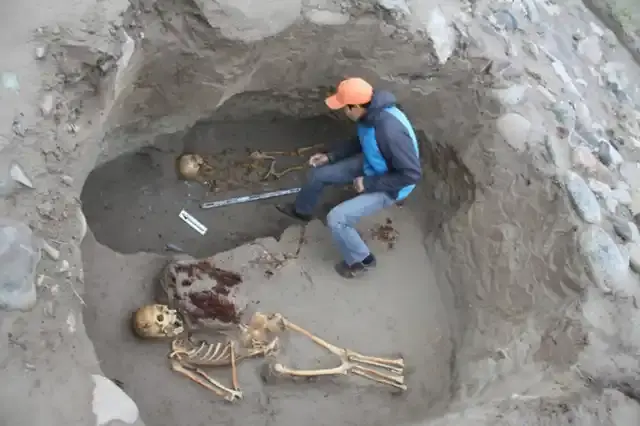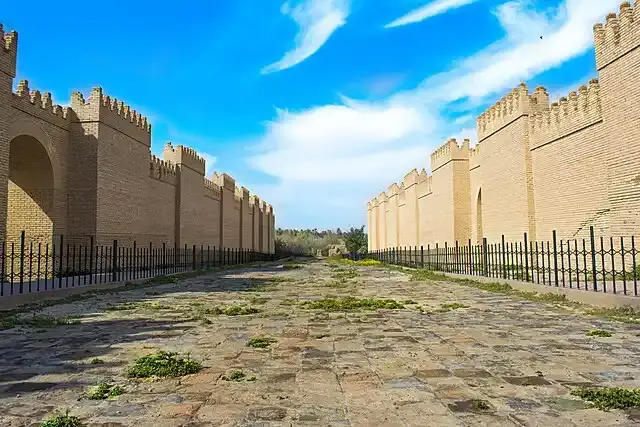Nine mythical places that may have already existed: tracing the line between myth and reality
Throughout history, myths and legends have captured the imagination of civilizations around the world. Many of these stories talk about fictional places where once lost gods, heroes and civilizations flourished. While some of these sites are still purely folklore, there are others that have tempted historians and archaeologists with evidence suggesting they may have once been real. In this article, we will explore nine mythical places that may have already existed, taking into account their geographical locations, time periods, cultural and religious significance, and the current state of research.
Show key points
- Throughout history, legendary places like Atlantis, El Dorado, and Shambhala have fascinated explorers and scholars with tales of lost civilizations and spiritual realms.
- While some of these mythical sites remain purely symbolic, others show possible links to real historical locations, such as Troy and Santorini.
- These myths often reflect the cultural, religious, and moral values of the societies that created them, serving as both allegories and historical records.
- ADVERTISEMENT
- Advances in archaeology and technology are gradually shedding light on the origins of these legends, fueling ongoing research and debate.
- Conflicts, environmental changes, and time have obscured or destroyed physical evidence, making some of these places hard to verify.
- The myths continue to inspire fiction, spiritual exploration, and scholarly interest, illustrating humanity’s deep yearning for meaning and discovery.
- Whether real or imagined, these mythical places remain powerful symbols of lost glory, divine wisdom, and the eternal quest for truth.
1. Atlantis - the lost city under the sea.

Geographical location: It is believed to be located in the Atlantic Ocean, although other theories refer to the Mediterranean Sea or the Caribbean.
Recommend
Period Time: Around 9600 BC (according to Plato).
Cultural and religious significance: In Greek mythology, Atlantis was a highly advanced civilization with immense naval power. It symbolized human pride and the consequences of challenging the gods.
Myth: The philosopher Plato was the first to tell the story of Atlantis, and he described a great island state that sank under the waves due to its moral decay and the wrath of the gods. Many believe that Plato's story was a moral metaphor rather than a historical novel.
Current situation: While Atlantis remains undiscovered, researchers have linked the legend to many real places, including the Greek island of Santorini, which was destroyed by a volcanic eruption around 1600 BC. The idea of Atlantis continues to arouse the curiosity of explorers and scientists alike.
Future: Ongoing advances in marine archaeology may provide further evidence of the potential location of Atlantis, although they remain elusive for now.
2. El Dorado – City of Gold.
Geographical location: It is believed to be located in the Amazon rainforest or the highlands of Colombia.
Timeline: Sixteenth century, during the Spanish Exploratory Age in South America.
Cultural and religious significance: In South American mythology, El Dorado was said to have been a gold-rich city, inhabited by a ruler who covered himself with gold dust and bathed in a sacred lake.
Myth: When the Spanish conquistadors heard tales of a gold-filled city, they embarked on dangerous expeditions to find it. El Dorado has become synonymous with wealth and unattainable dreams.
Current situation: Archaeologists have not yet found evidence of El Dorado's existence. Some believe that the legend may have been inspired by the Moisca civilization, whose rulers were involved in ceremonial golden offerings.
The future: With increasing access to the Amazon due to deforestation and modern technologies, new discoveries about ancient civilizations in South America continue to emerge, keeping hopes alive in discovering the true inspiration of El Dorado.
3. Shambhala - the hidden kingdom of peace.
Geographical location: It is believed to be located in the Himalayas, especially in Tibet or Bhutan.
Timeline: In the Buddhist and Hindu traditions, Shambhala is said to exist in an eternal spiritual world.
Cultural and religious significance: Shambhala is a sacred kingdom in Tibetan Buddhism, representing the utopia of peace and enlightenment. It symbolizes the pursuit of spiritual wisdom and freedom from suffering.
Myth: Shambhala is said to be ruled by wise and merciful kings, and only those with a pure heart can find it. It is predicted that when the world falls into chaos, the ruler of Shambhala will appear to restore balance.
Current status: Although no physical evidence of Shambhala has been found, it remains a central symbol in Tibetan Buddhist teachings. The kingdom's mythical status is associated with the pursuit of inner peace.
The future: Shambhala remains more of a spiritual metaphor than a physical place, yet the search for it still inspires modern-day pilgrimage and spiritual practice.
4. Camelot - the legendary kingdom of King Arthur.

Geographical location: They are often placed in England or Wales, although their exact location is highly controversial.
Timeline: The legend of King Arthur takes place in the early medieval period, around the fifth or sixth centuries.
Cultural and religious significance: Camelot symbolizes the ideal kingdom ruled by King Arthur and the Knights of the Round Table, which embodies chivalry, honor and justice.
Myth: In medieval romances, Camelot was the center of King Arthur's rule, as heroic knights set out to search for the Holy Grail. The fall of the kingdom was ultimately the result of the betrayal of King Arthur's closest allies.
Current situation: No conclusive archaeological evidence of the existence of Camelot has been found. Some historians speculate that King Arthur's court may have been based on real Celtic or Roman-British castles.
The future: The legend of Camelot remains deeply entrenched in Western cultural history, inspiring literature, film, and studies.
5. Garden of Eden - the home of humanity.
Geographical location: Traditionally located in Mesopotamia, near the Tigris and Euphrates rivers (modern Iraq).
Time period: prehistory, before the beginning of written history.
Cultural and religious significance: In the Jewish, Christian and Islamic traditions, the Garden of Eden is the paradise in which the first human beings, Adam and Eve, lived before their fall from grace.
Myth: The story of the Garden of Eden explains the origin of sin and the separation of humanity from God. It has been described as a fertile paradise with a tree of life and a tree of knowledge.
Current situation: While scientists have tried to locate Eden with ancient river valleys in Mesopotamia, no conclusive archaeological evidence has been found. The garden is often interpreted symbolically, not literally.
The future: Aden remains a powerful metaphor for the lost paradise, although scientific discoveries about the origins of human life in East Africa have reshaped modern interpretations.
6. Troy - City of Heroes.

Location: Modern Turkey, near Dardanelles.
Period : Bronze Age, circa 1200 BC.
Cultural and religious significance: Troy was the scene of Homer's Iliad, which tells the story of the Trojan War. The city became a symbol of heroism, conflict and the will of the gods.
Myth: According to Greek legend, the Greeks besieged Troy for ten years, culminating in its fall due to the clever Trojan horse's trick. The destruction of the city became a central event in Greek epic poetry.
Current situation: The ruins of ancient Troy were discovered in the nineteenth century by Heinrich Schliemann, confirming the existence of a real city one day on the site. Archaeologists continue to study its layers to better understand its history and the events that may have inspired the legend.
The future: With new techniques in archaeology, future excavations in Troy may reveal more about the city's role in the ancient world and how its story evolved into a myth.
7. Lyonis - Land sunken in the legend of King Arthur
Geographical location: It is believed to be located off the coast of Cornwall, England or the Isles of Scilly.
Period of time: Placed by the legend of King Arthur around the sixth century AD.
Cultural and religious significance: Leonis was said to have been the home of Sir Tristan, one of King Arthur's knights. They symbolize lost lands, tragic love and the power of the sea.
Myth: According to Cornish folklore, Lyonis was a fertile kingdom that sank under the waves, leaving only the Isles of Scilly as remnants. Some versions of the story indicate that Arthur himself was from Lyonis.
Current situation: Leonis has not yet been found, but the area around Cornwall is rich in archaeological remains from the Celtic and Roman periods. Coastal erosion and rising sea levels may have contributed to the myth of the lost land.
The future: As sea levels continue to change, underwater archaeology may provide more clues about the real sites that inspired the legend of Lyonis.
8. Ain Dara: The mysterious temple of the gods.

Geographical location: Northwestern Syria, near the modern village of Ain Dara, near the Turkish border.
Period : Built during the Late Bronze Age, circa 1300-700 BC.
Cultural and religious significance: The Ain Dara Temple is an important religious building of Hittite Syrian culture. It is dedicated to a god, perhaps Ishtar or a similar mother goddess, and represents a major part of the region's ancient spiritual and cultural heritage.
Myth: The temple features two huge stone prints carved into the ground at its entrance, leading to legends that these were the footprints of a giant god or goddess who visited the temple. These features have sparked comparisons with other ancient religious sites in the Near East, including the biblical Temple of Solomon, due to architectural similarities.
Current situation: Unfortunately, a large part of the Ain Dara temple was damaged during the war in Syria, with airstrikes in 2018 causing significant destruction to the ancient site. However, the remaining relics are still of archaeological interest, with many scholars focusing on the temple's unique symbolism and craftsmanship.
The future: As the conflict in Syria slowly ends, efforts may be made to preserve or even partially restore the site. However, much of the temple's grandeur has been lost, and it remains a symbol of the ongoing threats to cultural heritage sites in conflict zones.
9. Shambhala: The Sufi Kingdom of Inner Peace.
Geographical location: It is believed to be located in the Himalayas, possibly Tibet.
Timeline: Buddhist texts refer to Shambhala at a time outside of traditional history, and associate it with a future era.
Cultural and religious significance: In Tibetan Buddhism, Shambhala is seen as an ideal paradise of enlightenment and peace, accessible only to the pure of heart. It represents a place of ultimate spiritual achievement.
Myth: According to legend, Shambhala will one day emerge from her hidden world when the world is in turmoil, heralding an era of peace led by the future Buddha, Maitriya.
Current situation: Shambhala remains undiscovered, but many believe that it is a metaphorical or spiritual world rather than a physical location. The legend continues to inspire spiritual researchers.
The future: As interest in spirituality grows globally, the legend of Shambhala may continue to evolve, as modern interpretations blend with ancient teachings.
These nine mythical places, whether lost cities, sacred worlds or paradises, captured the imagination of generations, blending history, culture and myth. These places are just examples of mythical sites spread across the globe and include hundreds of sites. While some of these places may never be found, they are signs of humanity's eternal curiosity, longing for adventure, wisdom and discovery. As technology continues to push the boundaries of exploration, fragments of truth hidden within these myths are likely to emerge, introducing new chapters in the stories of these mythological worlds.
![]()
Success Guide - How to discover your passion?
Discovering your passion is a personal journey that brings meaning and joy to life. It’s about finding what excites you, motivates you, and makes you feel alive. With patience, reflection, and trying new experiences, you can uncover what truly inspires you without needing to spend a fortune. more- ADVERTISEMENT
![]()
Rare Roman ruins in Timgad Algeria
Timgad, a stunning Roman ruin in Algeria, feels like stepping into ancient times with its well-preserved streets, grand baths, and rare Roman public library. Built by Emperor Trajan in 100 AD, its beauty, history, and remote mountain setting make it a highlight for anyone who loves exploring old cities. more- ADVERTISEMENT
![]()
The splendor of nature and the challenge of conditions in the oasis of Taghit in western Algeria
Taghit is a hidden gem in western Algeria, where golden dunes meet ancient history. Adventure seekers can sandboard down towering dunes, explore mysterious caves, or discover 20,000-year-old rock carvings. The ancient walled city of Kassar, once forgotten, is now being restored to its former glory. more- ADVERTISEMENT
![]()
Can you get into Svalbard's seed vault?
Tucked inside a remote Arctic mountain, the Svalbard Global Seed Vault stores over 930,000 crop varieties as a backup for global food security. It's a quiet champion, preserving biodiversity and standing ready when disaster or conflict strikes, like it did for Syria’s lost gene bank. more- ADVERTISEMENT
![]()
The world's oceans: species, environments, life and the magic of colors
The oceans, covering over 70% of Earth, are changing color due to climate change and human impact. From deep blue in the Pacific to green or milky turquoise in coastal or Arctic waters, these shifts reveal changes in marine life and health, making ocean conservation more vital than ever. more- ADVERTISEMENT
![]()
Integrating AI with Biotechnology – Concerns and Advantages
AI and biotechnology together are changing the game—speeding up drug discovery, improving diagnosis, and creating personalized treatments. They’re also boosting sustainable farming and designing smart materials. While full of promise, there are real concerns about privacy, bias, and job loss that demand careful attention and strict ethical guidelines. more- ADVERTISEMENT
![]()
The 5 oldest ancient human monuments in Egypt
The 5 oldest ancient human monuments in Egypt more- ADVERTISEMENT
![]()
5 electronic games to develop your skills and intelligence
Discover how video games like SimCity, Stardew Valley, and Gorogoa can sharpen your mind, boost creativity, and help with planning and decision-making—all while having fun. Not all games are just for play; some are powerful tools for personal growth and learning. more- ADVERTISEMENT
![]()
Babylon... The empire engraved in the memory of history
Babylon, once the world's largest city and symbol of power, was famed for its Hanging Gardens and Hammurabi's laws. Despite its fall, religious texts and historians kept its memory alive, portraying it with awe or condemnation. Rediscovered centuries later, it remains a symbol of legacy and greatness. more- ADVERTISEMENT
![]()
Arabian Desert: What's there to see there?
The Arabian Desert, home to the vast Empty Quarter, is one of the world's driest and hottest places. In Dubai, desert safaris offer thrilling adventures like dune bashing, quad biking, sandboarding, and camel rides—topped off with starlit camping, music, and delicious food for a truly unforgettable experience. more- ADVERTISEMENT





















